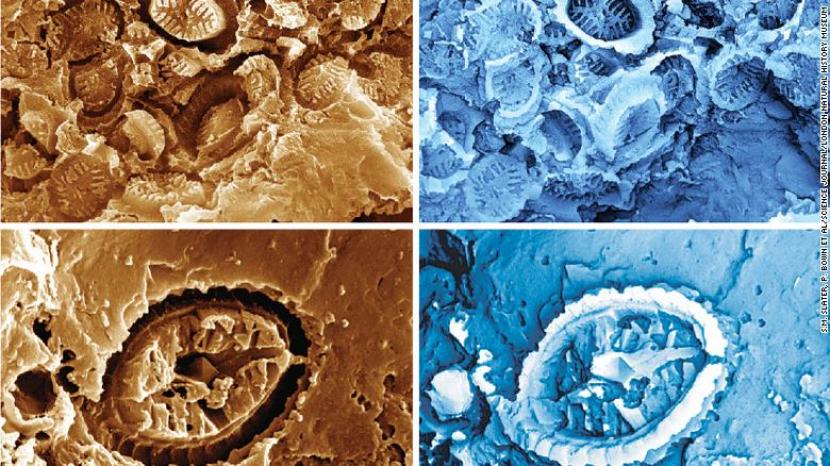Small plankton are still living storing carbon in seabed sediments.
REPUBLIKA.CO.ID, JAKARTA — The discovery of “ghost” fossils of tiny ancient organisms could reveal new information about how life responded climate change in the ocean.
Researchers were astonished to observe single-celled plankton, or fossilized nanoplankton, that lived millions of years ago when examined under a microscope. The findings were published in the journal Science.
“Discovery ghost fossil really a surprise,” said study author Sam Slater, researcher at the Swedish Museum of Natural History in Stockholm.
“We’re actually studying fossilized pollen from the same rock. I’ve never seen this style of fossil preservation before, and this finding was very surprising because traces were found in abundance from rocks where normal nanofossils were rare or missing altogether,” he said.
Slater said the researchers saw “small holes” in the pollen’s surface when they examined it under an electron microscope. They saw the complex structure when zoomed in to see the hole at a magnification of thousands of times.
The impression left by the exoskeleton of nanoplankton called Coccolithophores is such a structure. These tiny plankton are still alive and well today, supporting marine food webs, supplying oxygen, and storing carbon in bottom sediments.
Coccolithophore own coccolith, or hard calcareous plates, which surround the cells and can be fossilized in rocks. Although Coccolithophore has a small size, but can form flowers like clouds in the water that can be observed from space.
When they die, their exoskeleton sinks to the bottom of the ocean. The exoskeleton can turn to limestone like stone when collected.
When ocean sediments turn to rock, ghost fossils are formed. The hard coccolith plates are forced together with other organic matter, such as pollen and spores, as layers of dirt build up on the ocean floor.
The acidic water trapped within the rock chamber dissolved the coccolith over time. All that remained of them were the imprints they had made on the rock.
“The preservation of these ghost nanofossils is truly remarkable,” said study co-author Paul Bown, a professor of micropaleontology at University College London.
“The ghost fossil is very small, about five thousandths of a millimeter long, 15 times narrower than the width of a human hair! but the details of the original plates are still perfectly visible, pressed into the archaeological surface of organic matter, even though the plates themselves have dissolved,” Bown said.
Filling the gap
Previous research has found this fossil decline during previous periods of global warming impacting the ocean. This leads scientists to think that plankton are being harmed by ocean acidity and climate change in general.
On the other hand, ghost fossils provide evidence that coccolithophores common in water during the three ocean warming events that occurred 94 million, 120 million, and 183 million years ago, spanning the Jurassic and Cretaceous periods.
“Typically, paleontologists only look for the coccolith fossils themselves, and if they don’t find them then they often assume that this ancient plankton community collapsed,” said study co-author Vivi Vajda, professor at the Swedish Museum of Natural History.
“This ghost fossil shows us that sometimes the fossil record plays tricks on us and there are other ways that these calcareous nanoplankton can be conserved, which need to be taken into account when trying to understand responses to past climate change,” he said.
The researchers initially focused on the Toarcian Oceanic Anoxic Event, which occurred 183 million years ago during the Early Jurassic period, when volcanoes released more carbon dioxide in the Southern Hemisphere, causing rapid global warming.
Scientists have found ghost fossils linked to this event in Britain, Japan, Germany, and New Zealand, as well as specimens associated with warmer ocean episodes 120 million years ago and 94 million years ago, respectively, in Sweden and Italy. .
Researchers can use this knowledge to search for ghost fossils in other gaps in the fossil record and better understand the era of warming throughout Earth’s history.
–

:quality(80)/cdn-kiosk-api.telegraaf.nl/ca4ed8e4-d943-11ec-80e8-0218eaf05005.jpg)
